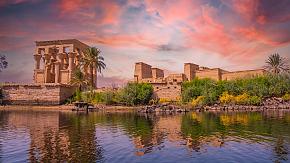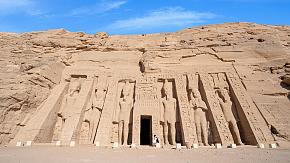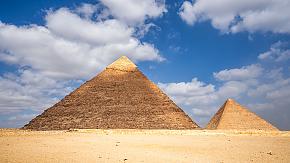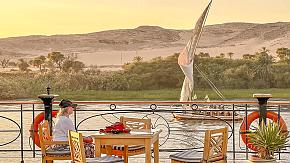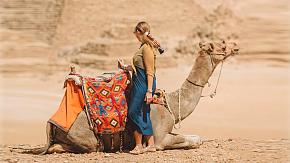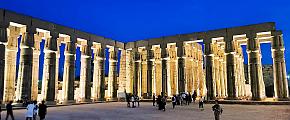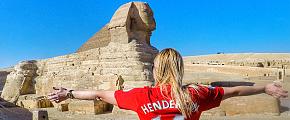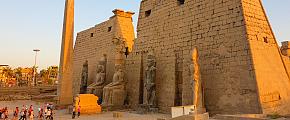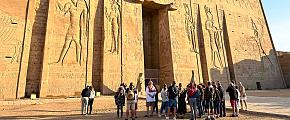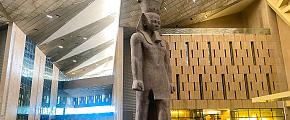9 of the Most Famous Egyptian Pyramids to Visit
Standing in the vast deserts of Egypt, the pyramids are a testament to the grandeur and power of the ancient civilization that built them. Despite the long-time debate about how pyramids were really built, the size and beauty of pyramids are indisputable, attracting millions of visitors each year. Egypt is home to many pyramids, and each tells a story of history and human ingenuity. In this article, we'll take a closer look at some of the most famous pyramids in Egypt and explore the history and architecture of these monumental structures.
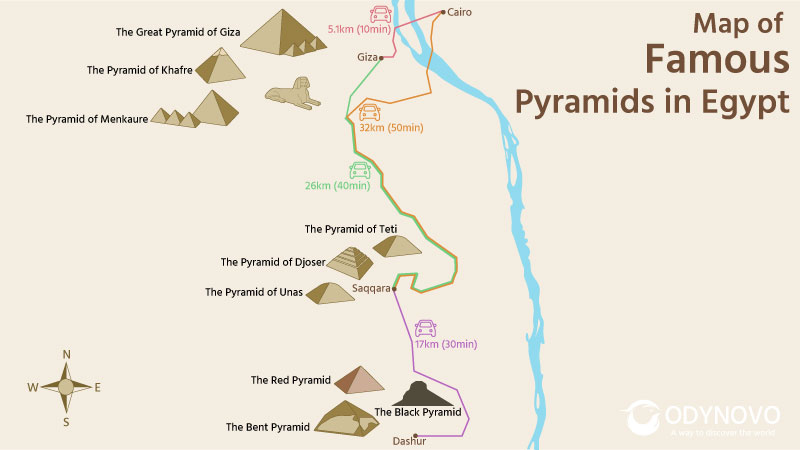 Travel Map of Famous Egyptian Pyramids
Travel Map of Famous Egyptian Pyramids
The Great Pyramid of Giza
Also known as the Pyramid of Khufu or the Pyramid of Cheops, this is the largest and most famous pyramid in Egypt. The Great Pyramid of Giza is located on the Giza Plateau, on the outskirts of Cairo, Egypt. It is part of a larger complex that includes two smaller pyramids, several smaller tombs, and the Sphinx. You will never miss the Great Pyramid of Giza when you travel to Egypt.
It was built around 2560 BCE as a tomb for the Pharaoh Khufu. The pyramid was originally 146 meters tall, but today it stands at around 138 meters due to erosion and the removal of its outer casing stones. It is estimated that the pyramid was built using around 2.3 million stone blocks, each weighing an average of 2.5 tons. Inside the Great Pyramid of Giza, it contains a series of passages and chambers, including the King's Chamber and the Queen's Chamber.
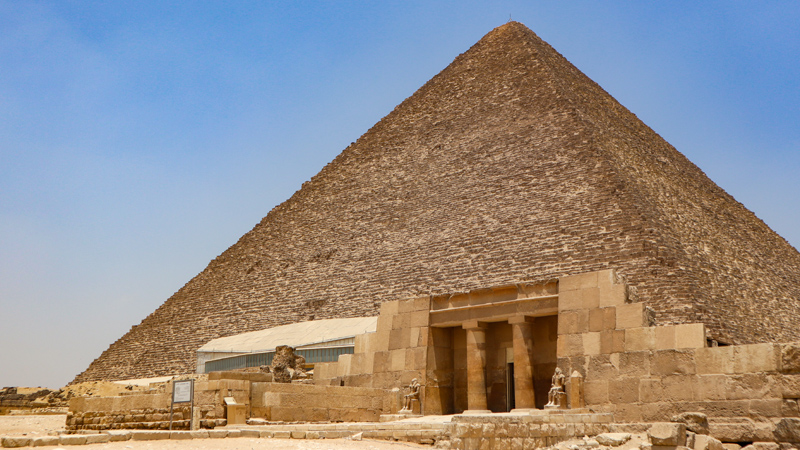 The Great Pyramid of Giza
The Great Pyramid of Giza
The Pyramid of Khafre
Situated just to the southwest of the Great Pyramid of Giza. The Pyramid of Khafre is the second largest pyramid in Giza, also known as the Pyramid of Chephren, which was built for the Pharaoh Khafre, who ruled Egypt during the 26th century BCE, as well as the son of Khufu.
Thought to have been constructed between 2520 and 2494 BC, the pyramid still retains some of its original casing stones, which were made of polished white limestone and gave the pyramid a smooth surface. The pyramid also has a separate entrance that leads to the burial chamber, which was a common feature of pyramids during this period.
The Pyramid of Menkaure
The Pyramid of Menkaure is the smallest of the three pyramids in Giza, Egypt, and was built for the Pharaoh Menkaure, who ruled during the Fourth Dynasty of the Old Kingdom period, around 2510 BC. It is also known as the Pyramid of Mycerinus.
The pyramid stands at around 65 meters tall and is constructed of limestone blocks, with the lower layers made of red granite. Similar to the other pyramids in Giza, it was originally covered in a smooth layer of white limestone casing stones, but only a few of these remain today. One of the unique features of the Pyramid of Menkaure is that it has three subsidiary pyramids, which were built for the pharaoh's wives and family members. These pyramids are arranged in a row along the eastern side of the main pyramid and are significantly smaller than the main pyramid.
The Bent Pyramid
The Bent Pyramid is located in the Dahshur necropolis, about 40 kilometers south of Cairo, Egypt. It is named for its unusual shape: it has two different angles of inclination, with the lower portion of the pyramid having a steeper slope than the upper portion. It was built during the Old Kingdom period, around 2600 BC, for the Pharaoh Sneferu, the father of Khufu.
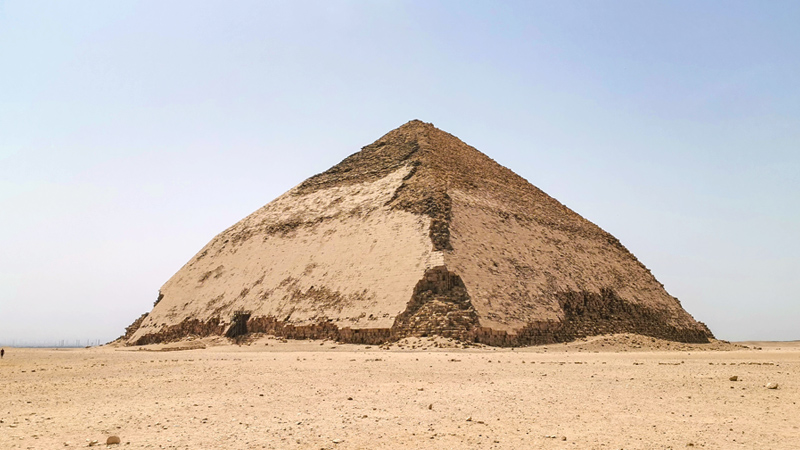 The Bent Pyramid
The Bent Pyramid
The Red Pyramid
Also built for the Pharaoh Sneferu, The Red Pyramid was located in the Dashur Necropolis and was built during the Old Kingdom period, around 2600 BC. As indicated by its name, it is called the "Red Pyramid" because of the color of the limestone used to build it, which has a reddish hue.
It is the third largest pyramid in Egypt, standing at around 104 meters tall. The pyramid is characterized by its smooth and straight sides, which were thought to have been designed to avoid the structural problems that plagued the Bent Pyramid. The Red Pyramid is notable for being the first "true" pyramid, meaning that it has straight sides and a flat top, rather than the bent or stepped sides of earlier pyramids. It can be fully accessed, including the chance to see the burial chamber inside.
The Pyramid of Djoser
This pyramid, sometimes called The Step Pyramid, is located in the Saqqara necropolis and was built for the Pharaoh Djoser during the 27th century BCE. It is a significant milestone in history - it is regarded as the first known monumental structure made of stone and the oldest known pyramid in Egypt. Designed by the architect Imhotep, it was constructed as a series of six rectangular flat-roofed tombs, stacked on top of each other. This gave the pyramid a stepped appearance, with each level gradually decreasing in size.
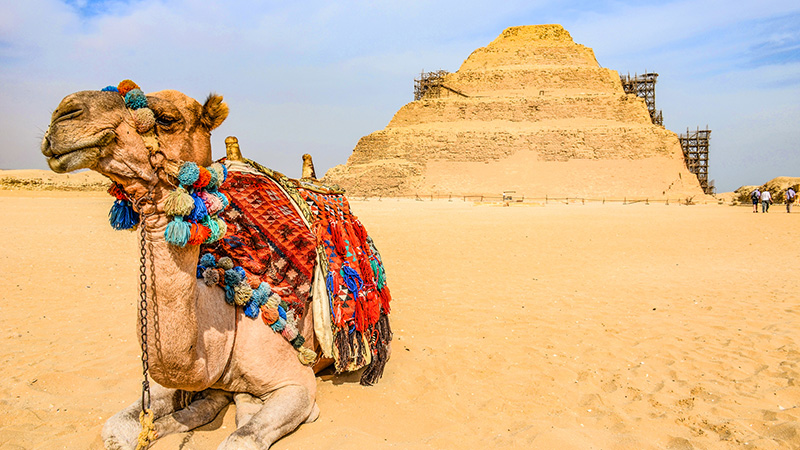 The Step Pyramid
The Step Pyramid
The Pyramid of Unas
Located in the Saqqara necropolis, this pyramid was built for the Pharaoh Unas during the 24th century BCE. It is notable for its extensive inscriptions, which are a collection of religious spells and incantations that were inscribed on the walls of the burial chamber. These texts are some of the oldest known religious writings in the world and provide valuable insights into ancient Egyptian religious beliefs and practices.
In terms of size, The Pyramid of Unas is smaller than some of the other pyramids in Egypt, standing at around 43 meters tall. However, it is admired for its historical significance as one of the last pyramids of the Old Kingdom period, and for its well-preserved pyramid texts, which continue to fascinate researchers and historians today.
The Pyramid of Teti
Also situated in the Saqqara necropolis, this pyramid was built for the Pharaoh Teti during the 23rd century BCE. The pyramid complex also includes a mortuary temple, which was used for rituals and offerings to the pharaoh, and a causeway, which connected the temple to the valley temple. The valley temple was used as a landing place for boats coming up the Nile River.
Although the structure above ground is not very well-preserved, what's below ground is very well-preserved. The pyramid is well-known for its exquisite interior decorations in the chambers and corridors, which include some of the earliest examples of the Coffin Texts. These texts are inscribed on the walls of the burial chamber and provide valuable insights into ancient Egyptian religious beliefs and practices.
The Black Pyramid
Located in the Dahshur necropolis, this pyramid was built for the Pharaoh Amenemhat III during the 19th century BCE. Just like The Red Pyramid, The Black Pyramid is named for its dark appearance, which is the result of exposure to natural forces over thousands of years.
Standing at around 75 meters tall, The Black Pyramid is not as well-preserved as some of the other pyramids in Egypt, such as the Great Pyramid of Giza or the Red Pyramid. Despite that, some parts of the pyramid complex are still relatively well-preserved. The mortuary temple, for example, still contains some of its original architectural features, including columns and walls with inscriptions. Therefore, it is still considered an important archaeological site and provides valuable insights into the architecture and culture of ancient Egypt.

Tips for Visitors to Egyptian Pyramids
Best Pyramids to Visit for First-Timers
We recommend first-time visitors focus on the Giza Plateau to see the iconic Great Pyramid of Khufu, the Pyramid of Khafre, and the smaller Pyramid of Menkaure, along with the Sphinx. These are must-visit landmarks and offer the quintessential pyramid experience.
The distance between Saqqara and Giza is about 26 km. So if time allows, you can also make a quick stop at Saqqara to marvel at the Step Pyramid of Djoser, the oldest stone structure in Egypt, for a glimpse into the evolution of pyramid construction.
Choose the Time of Your Visit Wisely
When it comes to deciding when to visit the pyramids, there are different factors to consider. While cooler months (November to February) may offer more pleasant weather for outdoor activities, they also tend to attract more tourists and cause hotel prices to rise. On the other hand, although the temperatures during hotter months (June to August) can be a bit high, there will also be fewer visitors around the pyramids, which means you will enjoy more space and freedom, and the prices could go down due to lower demand. If you are afraid of hot weather, you can visit early in the morning or late in the afternoon when the heat is less intense, the crowds are thinner, and the light is better for photography.
Be Respectful
There are rules and regulations to protect the pyramids and ensure the safety of visitors. It is important to adhere to these rules, such as not littering and not smoking in prohibited areas. Apart from not defacing these historic landmarks, visitors should also keep in mind to respect local customs, considering Egypt is a predominantly Muslim country. For instance, it's a good idea to dress modestly and be mindful of local prayer times.
Stay Hydrated and Bring Sunscreen or a Hat
As mentioned above, Egypt can be a bit hot and dry, hence the need to drink plenty of water to stay hydrated. In addition, remember to apply a high-SPF sunscreen (at least SPF 30) to all exposed skin and reapply to regularly. Hats and sunglasses (preferably with UV protection) are also recommended, which can cover your delicate skin and eye and protect them from exposure to sun rays.
Be Prepared for Possible Hassle
While the pyramids are great tourist destinations, you may encounter vendors, tour guides, or camel and horse handlers who approach you and offer their services or products. If someone approaches you and offer a service or product, politely decline and continue walking. If they persist, be firm and assertive in your response. Do not disclose personal information or give money to individuals who approach you, as this may encourage further harassment.
Wear Comfortable Shoes and Clothing
Pyramids are located in vast desert areas, and you are likely to do much walking during your visit, so it's important to wear comfortable shoes that provide good support. Also, wearing lightweight and breathable clothes can help keep you cool and comfortable, which is especially important when exploring the pyramids. In the meantime, try not to wear revealing clothes, as the pyramids are an important cultural and religious site and this may cause unwanted attention.
Best Way to See Pyramids Is Having a Guide With You
A guided pyramids tour is the best way to make the most of your visit. An experienced guide brings the history and secrets of the pyramids to life, ensures smooth navigation through ticketing and crowds, and shares cultural tips for a respectful and enriching experience. They also know the best spots for photos. If you are traveling with Odynovo, you will have an experienced travel expert craft an efficient itinerary and a knowledgeable guide so you can see and know more about iconic landmarks without feeling rushed. It's the perfect way to dive into Egypt's ancient pyramids stress-free!
Quick Question
What Our Clients Say
Explore the latest verified reviews of Odynovo's travel services on Tripadvisor, Google, Trustpilot, Product Review and more trusted platforms.
SUBSCRIBE TO WIN A FREE TOUR
Subscribe to our newsletter for a chance to win a free 7-day tour to India! And more insider travel news, exclusive offers, and inspiration will be sent straight to your inbox. Check our previous newsletters and get some sparks.

